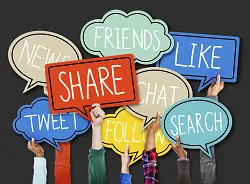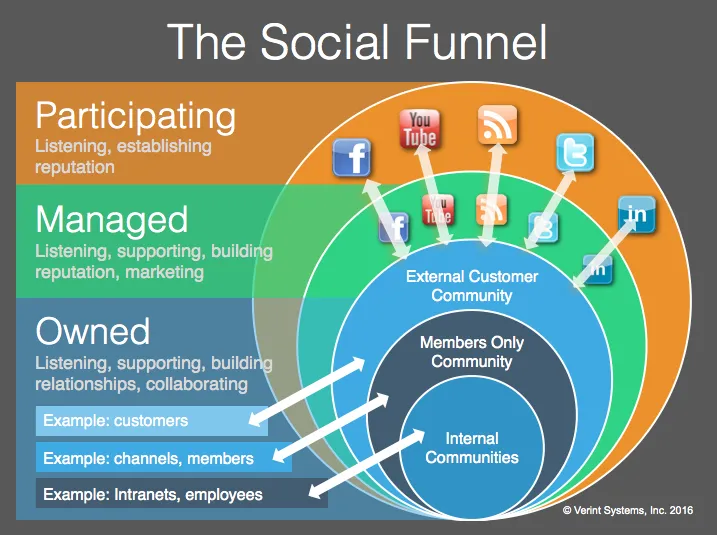Driving Online Engagement through the Social Funnel – Part I
How and where do you engage with your customers online?
The Social Funnel is a tool we use to help our customers understand how they should participate in social channels with their customers.
It is the universe of all the different social channels that are available—both to you and your customers. These channels are used to influence behavior and drive specific outcomes for your business.
There are three layers of the Social Funnel, and we recommend that your organization have a strategy in place for each layer.

Social Funnel Layer One: Participating in Social Channels
The Participating layer includes the social channels that are most familiar to consumer—Facebook, Twitter and LinkedIn—as well as standalone social apps such as personal blogs and forum communities such as Quora.
These are social networks started and managed by individuals or groups of users. As a visitor or guest in these networks, your company’s primary objective is to listen and address specific questions that you can answer.
For example, this is not where you broadcast messages about your products or services—it could hurt your reputation. In the Participating layer, social channels are started by individuals to discuss specific topics. Examples range from personal activities, professional activities to experiences or reviews of products or services. A good example is a restaurant review on Yelp.
The reason it is called the Participating layer is because, as an individual, you have the right to show up, introduce yourself and contribute meaningful discussions. However, you must recognize that you don’t own the discussion, nor should you heavily market to the site’s participants. Organizations should focus primarily on ensuring factual information is contributed in the Participating layer.
Tools for monitoring these channels exist to help you find potential customers that are active at this layer of the funnel. Successful interactions should drive those potential customers to the second layer of the funnel: the Managed layer.
Social Funnel Layer Two: Managed Social Channels
Successful engagement in the Participating layer is likely done through an organization’s owned social channels. In the Managed layer, your organization gets more control over the messages, the structure and the type of engagement.
This layer includes the same channels from the Participating layer (e.g., Facebook, LinkedIn, Twitter) but now are your organization’s owned Facebook page, LinkedIn or Twitter channels, where you do get to control messaging. These are accounts started and managed by your organization, but run on consumer-facing social channels.
In the Managed layer, your company needs to mirror the type of engagement and conversations your customers are having in the Participating layer, but with a clear focus on your product or brand. Consider Dell, which has a number of Twitter accounts that it uses to communicate deals or specials available to customers.
Keep in mind that while your organization is responsible for running and managing the channel, it does not “own” the rich information and user profile data created within. Typically, the facilitator of the community (Twitter, Facebook, etc.) benefits the most from the underlying data.
In the Managed layer you can use the same tools that you use for monitoring the Participating layer. Success here is measured in followers, likes and other interactions where potential customers are validating your channel. The outcome of these interactions should be to drive potential customers to the third layer of the Social Funnel: the Owner layer. More on that in part two.
Companies derive maximum value from their social channels when they see the funnel as a whole vs. individual channels:
- In the first layer, participate in social channels to create reputation and build awareness.
- In the second layer, engage and drive brand messaging, position and product offers.
In part two of this two-part series we’ll introduce layer three: Owned Channels—ultimately where you want your customers to go and where you can engage them directly for support or purchasing your products or services.
Verint’s Customer Engagement Optimization platform includes a powerful community platform for owned communities.
We can help you execute on the Social Funnel. Contact us to learn more.
The post Driving Online Engagement through the Social Funnel – Part I appeared first on Customer Experience Management Blog.